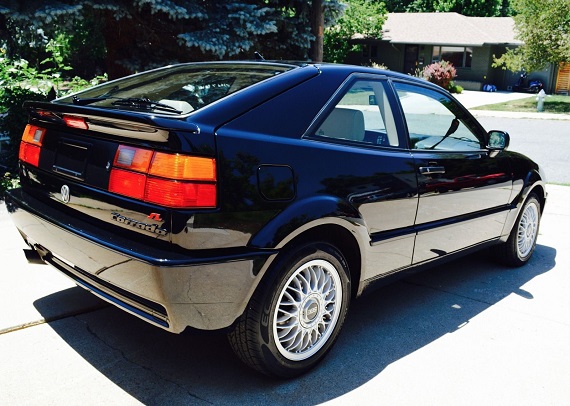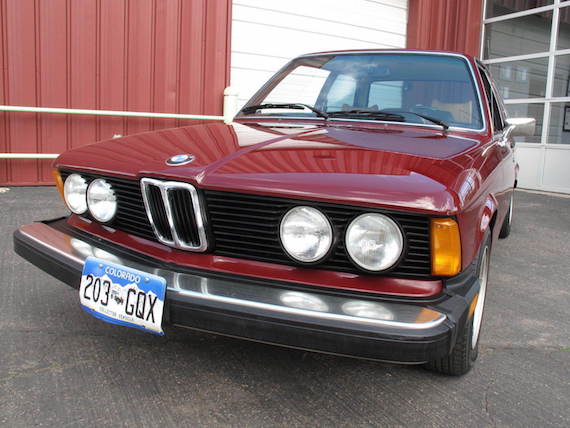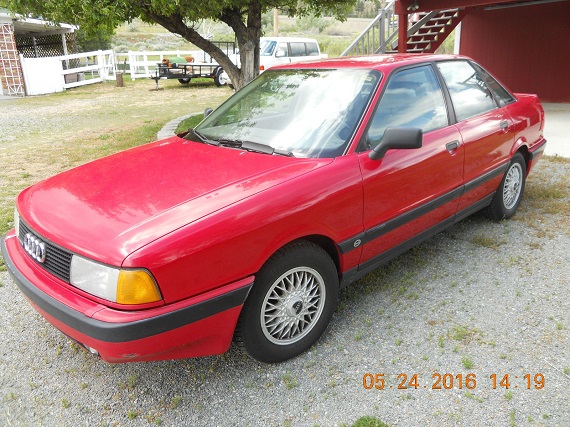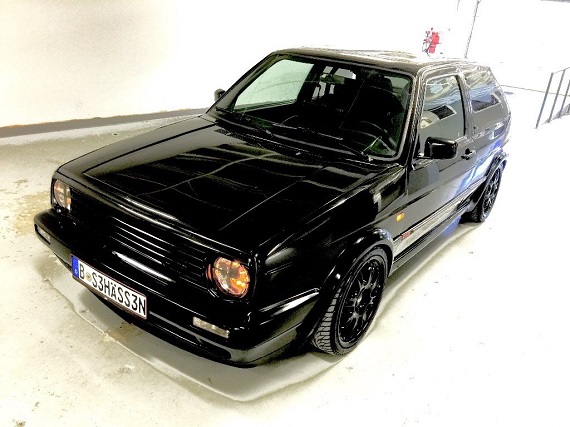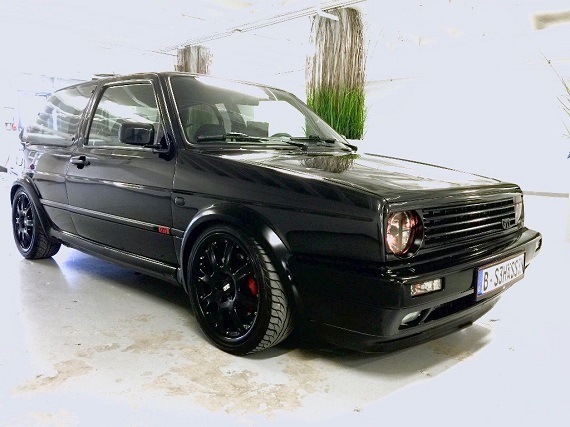Until fairly recently, “collector-quality Volkswagen” was pretty much an oxymoron unless you were talking about some rare air-cooled packages like the T34 Ghia or a 23 window microbus. But an explosion of 1980s products means that we’ve seen Mk.1 Sciroccos and GTis break $20,000 or more, and even an odd Mk.2 GTi come close to the same amount. If you’re trying to break in to the 1980s collector scene for Volkswagens, you might be a little late to the party. Not much from the 1990s makes the same impression, save one car – the Corrado. Unlike pretty much every Volkswagen ever made, these expensive sport coupes were prized since new and generally have avoided the pitfalls of downstream VW owners who tend to neglect and abuse them. As a result, we regularly get to see all-original, pristine low mileage Corrados that always amaze me. So throw on some flannel and crank the Soundgarden, we’re taking a trip back in time to 1992:
Tag: BBS
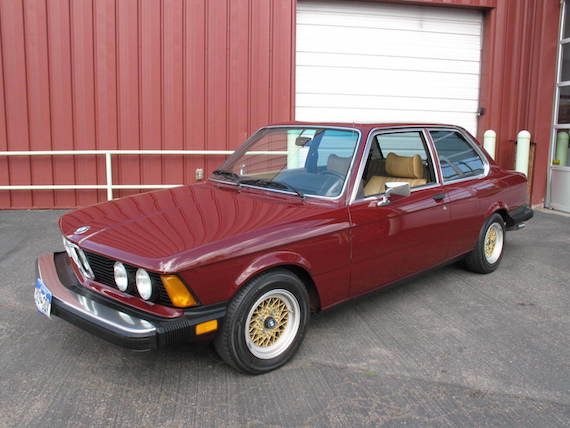 The E21 has never been quite as popular among enthusiasts as later iterations of the 3-series. Produced between 1977 and 1983, the E21 was the successor to the beloved 2002 and the first in the line of BMW’s compact sedans to carry the “3-series” designation. Available only as a two-door sedan (and eventually a Baur cabriolet conversion, produced in very small numbers), the Paul Bracq-led design contains a number of classic cues: the steeply raked front nose and kidney grilles, the four round headlights and the “hoffmeister kink” in the C-pillar among them. Even when stymied by the dreaded, US-spec diving board bumpers, as here, these wedge-shaped cars have a quirky and charming look that embodies the best of early BMW styling.
The E21 has never been quite as popular among enthusiasts as later iterations of the 3-series. Produced between 1977 and 1983, the E21 was the successor to the beloved 2002 and the first in the line of BMW’s compact sedans to carry the “3-series” designation. Available only as a two-door sedan (and eventually a Baur cabriolet conversion, produced in very small numbers), the Paul Bracq-led design contains a number of classic cues: the steeply raked front nose and kidney grilles, the four round headlights and the “hoffmeister kink” in the C-pillar among them. Even when stymied by the dreaded, US-spec diving board bumpers, as here, these wedge-shaped cars have a quirky and charming look that embodies the best of early BMW styling.
CLICK FOR DETAILS: 1978 BMW 320i on eBay
Comments closedFor U.S. customers, 1992 rather quietly signaled the end of an era for fans of the small chassis. Starting in the early 1980s, Audi had offered their offbeat 5-cylinder motor in models like the 4000 5+5 and Coupe models, but it was really the rally success of the Quattro that put the 5-pot on the map. But the turbocharged variant was quiet expensive, so fans of Audi’s WRC campaign rejoiced in 1984 when the all-wheel drive platform became much more affordable in 4000 quattro form. In Europe, there were several variants and power plants available in 80 and 90 form, but U.S. customers only got the relatively high-spec 4000S/CS quattro. Audi revised the model lineup with the B3 model run, introducing the lower-spec 80 and the more luxurious (and later, more powerful) 90. When the 90 went to the DOHC 7A 20V inline-5, the 80 remained with the 10V 2.3 liter NG which had first appeared in the Special Build Coupe GT model. Though not hugely powerful and feeling slightly overwhelmed by the 80 quattro’s mass, it was a very smooth and fun to drive package capable of huge odometer readings. The package remained available until 1992, when life of the 80 ended in the U.S. as it was not upgraded to B4 specification. As with all Audis from the period, it sold in small numbers: Audi reported only 640 sold in 1992, with not many more sold in the years before it. As the book closed on the inline-5 with a whimper rather than a bang, it’s relatively infrequent to spot one of these late 80s:
CLICK FOR DETAILS: 1992 Audi 80 quattro on eBay
1 CommentThe hot hatch may just be the perfect have your cake and eat it too automobile. And though many argue that they weren’t the originator and didn’t produced the best example in the market, Volkswagen’s GTi has been intrinsically linked with the moniker. It always raises an interesting question of which generation is best, and while there are plenty who would contend that the model never got any better than its original configuration, fans of each iteration of the venerable model abound. Like some others that read the blog, I came of automotive age in the midst of the Mk.2 model run. A Mk.2 Golf was also my second car, and as a result I have quite a soft spot for them. In the days before the internet, my knowledge of European models like the Golf Limited was non-existent, so at the time it got no better than the late GTi 2.0 16V. Wider arches, deeper bumpers, fog lights and the signature red striped quad-round grill setup coupled with some great colors like Montana Green. The roof mounted Fuba antenna was like a remote control pickup for fun, and capped with some awesome BBS RM multi-piece wheels and slick looking Recaros, the package might as well have said “Ferrari” on the front. But if the looks of the Mk.2 GTi were the best in the line, quite a few VW souls would point out that the fantastic sounding VR6 model that followed had the performance that really backed up the hot-hatch name. As a result, swapping the VR6 into the Mk.2 has not only become popular but almost a given, and VR swaps are nearly as prevalent as the ubiquitous S50/S52 in a E30 swap. This particular one has been dialed up a few more notches with a turbo, but channels the look of the 2.0 16V with some updates and a whole lot of black paint:
CLICK FOR DETAILS: 1992 Volkswagen Golf VR6 Turbo on eBay
2 Comments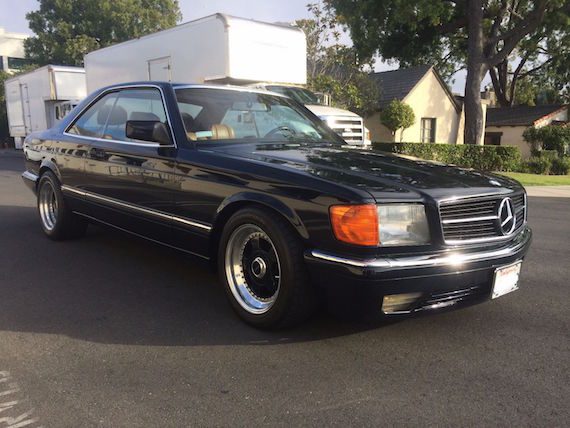 Mercedes’s C126 coupe first appeared in 1981 and remained in production until 1991. Derived from the W126 platform SE/SEL, the SEC combines the stately grace of the S-class sedan with the sportiness and elegance of a long, pillar-less coupe. These cars still look special today, especially with all the windows down, looking low and mean. The examples that usually catch my eye are either bone stock and completely original, or outrageously modified cars like the AMG wide-bodies which, when they do come to market, are usually priced at a couple of hundred grand. Today’s car, which is mostly stock but has been gently modified with some Euro and Lorinser accessories, represents a nice balance between the two.
Mercedes’s C126 coupe first appeared in 1981 and remained in production until 1991. Derived from the W126 platform SE/SEL, the SEC combines the stately grace of the S-class sedan with the sportiness and elegance of a long, pillar-less coupe. These cars still look special today, especially with all the windows down, looking low and mean. The examples that usually catch my eye are either bone stock and completely original, or outrageously modified cars like the AMG wide-bodies which, when they do come to market, are usually priced at a couple of hundred grand. Today’s car, which is mostly stock but has been gently modified with some Euro and Lorinser accessories, represents a nice balance between the two.

